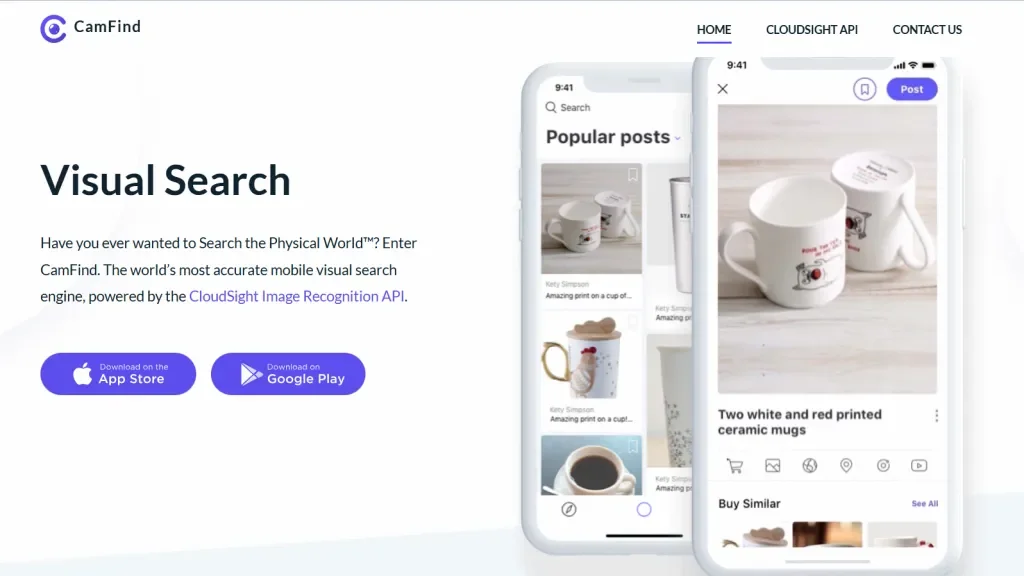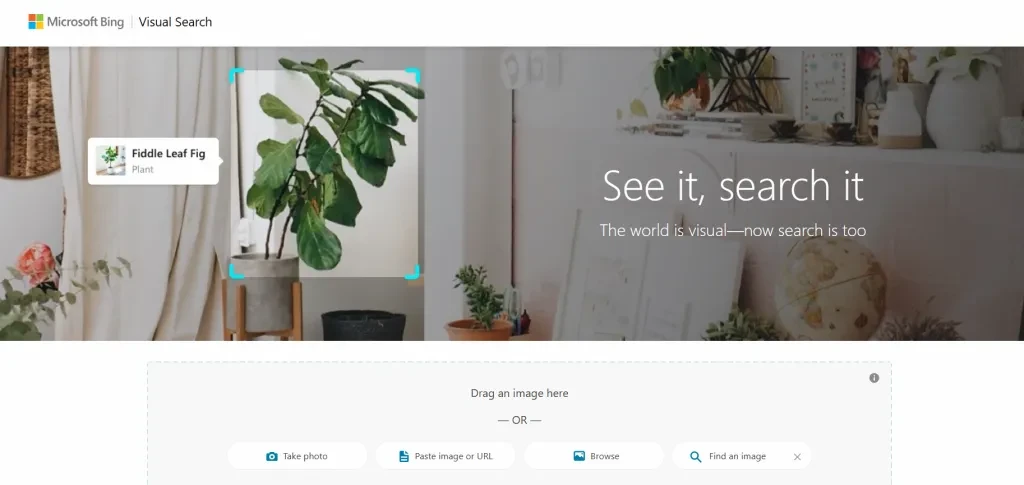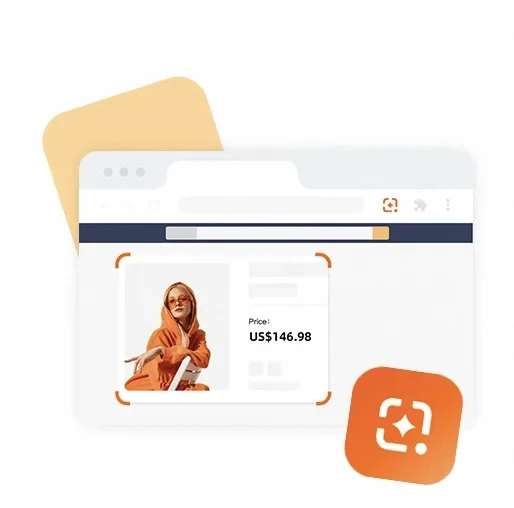Visual search is no longer just a novelty in ecommerce—it’s a powerful tool that transforms how buyers discover products and connect with suppliers. With a simple screenshot or photo, buyers can now bypass clunky keyword searches and get matched with relevant products instantly.
Google Lens is often the go-to tool for this kind of visual search. But when it comes to serious product sourcing—especially in B2B, dropshipping, or cross-border ecommerce—it has limitations. Google Lens can identify a product and show shopping links, but it doesn’t offer supplier filters, price tracking, customization options, or direct links to wholesale marketplaces.
That’s why, in 2025, many professionals are turning to smarter, sourcing-focused alternatives. Here are 7 image search tools that outperform Google Lens when it comes to discovering products and suppliers.
1. Alibaba Lens

Alibaba Lens is a Chrome extension developed by Alibaba.com for global B2B buyers. It’s designed to turn any product image into a sourcing opportunity—whether it comes from social media, a competitor’s site, or a random screenshot.
Key features:
- One-click image search from any website
- Real-time price comparison across Alibaba.com suppliers
- Filters for MOQ, verified suppliers, custom branding (OEM/ODM)
- Combines image and keyword search (multimodal)
Best for: Global buyers sourcing wholesale, custom, or private label products from Alibaba.com.
Key advantages over Google Lens: While Google Lens might identify a product, Alibaba Lens lets you find and compare suppliers, see MOQ and trade terms, and connect directly for sourcing.
2. 1688 AIBUY

1688 AIBUY is a browser plugin created for international buyers sourcing from 1688.com—the massive Chinese wholesale platform used primarily by local businesses. While 1688 is powerful, it’s not foreigner-friendly out of the box. AIBUY changes that.
Key features:
- Screenshot search for image-based sourcing on 1688
- Real-time translation of product pages and supplier chat
- Currency conversion from RMB to USD or EUR
- Displays packaging/export-readiness of suppliers
Best for: Buyers sourcing from Chinese domestic factories, especially those unfamiliar with Chinese language or logistics.
Key advantages over Google Lens: Google Lens can’t search inside 1688, translate supplier chats, or convert prices. AIBUY turns 1688 into a truly global sourcing platform.
3. AliPrice Extension

AliPrice is a multi-platform sourcing assistant and price tracker. Available as a Chrome plugin, it supports image search across marketplaces and helps track pricing trends, making it great for sellers managing multiple supplier channels.
Key features:
- Image search across Alibaba, 1688, Taobao, Amazon, Shein, etc.
- View historical price charts
- Translate product info and reviews from Chinese to English
- Export price and supplier data to Excel
Best for: Dropshippers and online sellers comparing product prices across several platforms.
Key advantages over Google Lens: Google Lens doesn’t show historical pricing or support data exports—AliPrice adds those analytical layers that professionals need.
4. Alitools

Alitools is a shopping assistant and image search tool built for sourcing on AliExpress. It allows users to find visually similar products using screenshots or product images, while also offering detailed seller analysis and price insights.
Key features:
- Reverse image search for AliExpress products
- Historical price tracking with graphs
- Seller trust ratings and product review summaries
- Similar product suggestions and coupon integration
Best for: Dropshippers, ecommerce beginners, and deal hunters sourcing from AliExpress.
Why it beats Google Lens: Google Lens can find product matches but doesn’t track prices, rate sellers, or integrate AliExpress-specific tools. Alitools combines visual search with sourcing intelligence for AliExpress users.
5. Perplexity AI “Snap to Shop”

Perplexity AI is known for its conversational AI capabilities, but its “Snap to Shop” feature adds image-to-product functionality. It lets users take a picture and get relevant product summaries, links, and context instantly.
Key features:
- AI-generated product descriptions from image input
- Shopping links from ecommerce platforms
- Seamless integration into a conversational search experience
Best for: Tech-forward users who want AI-powered product suggestions from visual input.
Key advantages over Google Lens: It adds context, summaries, and actionable insights—not just a list of similar images.
6. CamFind

CamFind is a mobile app that allows users to take a picture of any object and get matched with shopping results, reviews, and alternatives.
Key features:
- Snap-to-search product matching
- Shows similar products and online sellers
- Save and share search results
Best for: Entrepreneurs or retail scouts capturing product leads from the real world (stores, events, displays).
Key advantages over Google Lens: CamFind offers mobile-first image sourcing with shopping results and fewer distractions than Google’s broader ecosystem.
7. Bing Visual Search

Microsoft’s Bing Visual Search offers a polished alternative to Google Lens, with ecommerce integration and image recognition for a wide range of items.
Key features:
- Upload or drag-and-drop images to start searching
- Identify objects and find shopping matches
- Filtering by price, size, and color
Best for: General users or ecommerce sellers looking for a lightweight image-based shopping tool.
Key advantages over Google Lens: It offers stronger ecommerce filtering and direct integrations with Microsoft’s Shopping tools.
How to choose the right visual sourcing tool
Selecting the right visual sourcing tool depends on your business model, target markets, and workflow preferences. Below is a guide based on sourcing contexts:
- B2B buyers sourcing wholesale or custom products benefit most from tools with supplier filtering, minimum order quantity (MOQ) visibility, and OEM/ODM customization support. Recommended tools: Alibaba Lens, 1688 AIBUY
- Dropshippers and sellers managing multiple platforms need tools that support price tracking, image search across different marketplaces, and supplier comparisons. Recommended tools: AliPrice, Alitools
- Sourcing professionals facing language and currency barriers should use plugins that offer real-time translation of product descriptions and supplier chats, as well as automatic currency conversion from RMB. Recommended tools: 1688 AIBUY, AliPrice, Alitools
- Buyers sourcing from offline stores, photos, or social content need mobile-first image search tools that can turn physical visuals into digital leads. Recommended tools: CamFind, Perplexity AI Snap to Shop
Final thoughts
Google Lens is great for casual identification, but it wasn’t built with professional sourcing in mind. From lack of supplier visibility to missing tools for translation and pricing, it falls short for ecommerce professionals.
That’s where tools like Alibaba Lens, 1688 AIBUY, AliPrice, and Alitools come in—offering smarter, sourcing-specific features tailored to modern workflows. For those building ecommerce platforms or scouting from the real world, solutions like CamFind and Perplexity AI bring image recognition into every stage of the buyer journey.
In 2025, visual search isn’t just an ecommerce trend—it’s an edge. The right tool can save time, increase margins, and surface product opportunities you never would have found with text alone.
Try one—or combine a few—and unlock the full potential of image-based product sourcing.
Further reading:
- Alibaba Lens: How To Achieve More B2B Success With AI Image Search Now
- Alibaba Lens: Easy Comparison & Customization for Better B2B Sourcing

Looking for an easier way to find products and better deals from any website
while browsing? Add Alibaba Lens to Chrome and start using AI-powered image search for free today.



